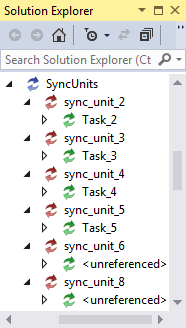Sync Unit Assignment
Sync Units define independent units of IO devices. Each unit contains process data that is consistent and synchronized. Sync Units can combine data from different slave devices. A process data diagnosis is performed cyclically for each Sync Unit. If the process data within a Sync Unit is invalid, the control application can respond as appropriate for this Sync Unit.
Fieldbus devices can be grouped into Sync Units. If a field bus device fails within a Sync Unit, then devices of the own Sync Unit are marked as faulty, but devices in other Sync Units are not affected by this. Sync Units should be created if an EtherCAT slave device is expected to fail. For example, the supply voltage for a system section could be switched off for safety reasons. Sync Units must be created if fieldbus segments are to be switched off and other devices are not to be affected by this.
Sync Units help to structure applications. They are useful for applications in which machine parts can be switched off but the rest of the machine is to continue working.
Open the "Sync Unit Assignment" dialog by selecting the corresponding EtherCAT master device in the I/O tree and clicking the "Sync Unit Assignment…" button on the "EtherCAT" tab.
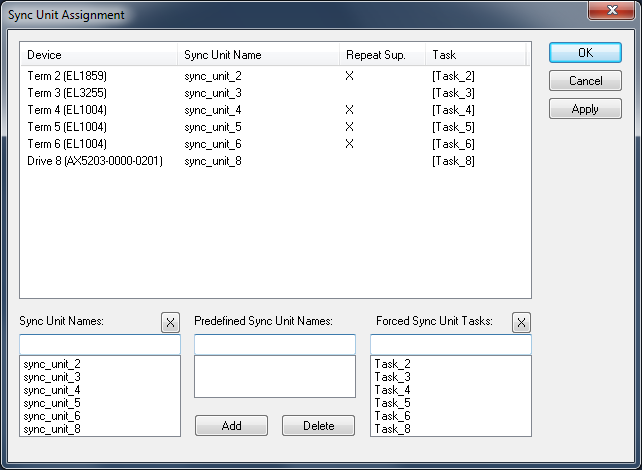
The names of the terminals and Drive 8 in the example are listed in the "Device" column. A Sync Unit has been assigned to each of the terminals and the drive. The names of the assigned Sync Units are shown in the "Sync Unit Name" column. In the right-hand column, tasks are assigned to the Sync Units.
To assign one or more devices to a Sync Unit, select the corresponding rows in the table. Then enter the desired Sync Unit name in the "Sync Unit Name" text box or select it from the list field below the box. To assign a task, select it under "Forced Sync Unit Tasks".
Click "Apply" to apply the modified settings. The dialog remains open. Clicking "OK" also applies the modified settings and closes the dialog. Click the "Cancel" button to close the dialog without applying any changes.
Right-click the "SyncUnits" entry in the IO tree under the associated EtherCAT device. "Add New Item…" appears in the context menu.
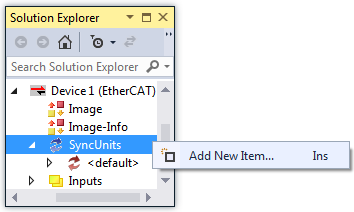
Click "Add New Item…" to open the "Insert Sync Unit" dialog.
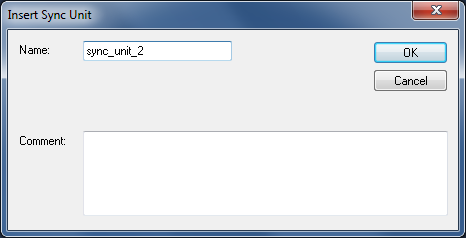
In the "Insert Sync Unit" dialog you can enter a name for the new Sync Unit in the "Name" text box. You can enter a comment in the "Comment" text box. Click "OK" to create the new Sync Unit and close the dialog, click "Cancel" to close the dialog without creating a new Sync Unit.
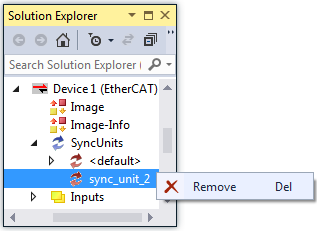
A new Sync Unit named "sync_unit_2" has been created in the IO tree under SyncUnits. It can be deleted by right-clicking and clicking "Remove" in the context menu.
Double-click "sync_unit_2" to open a dialog with the "Sync Unit" tab. Here in the example we can assign sync_unit_2 to terminal 2. All other terminals are already assigned to Sync Units. We had previously assigned sync_unit_3 to terminal 3, sync_unit_4 to terminal 4, sync_unit_5 to terminal 5, sync_unit_6 to terminal 6 and sync_unit_8 to drive 8.
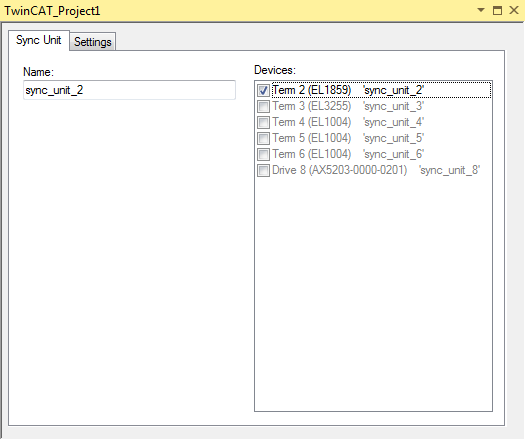
The "Settings" tab contains the "Individual WcState Tolerance Cycles" checkbox. The "WcState Tolerance Cycles" NumericUpDown control allows you to set how often a WcState error is tolerated. Tolerating the WcState error refers to the Sync Unit to which the dialog belongs.
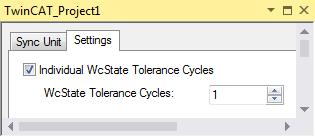
We have linked terminal 3 to Task_3. Accordingly, the entry "Task_3" is shown under "Sync Unit Context" in the "Name" text box. Under "Devices" we see that terminal 3 is connected to sync_unit_3.
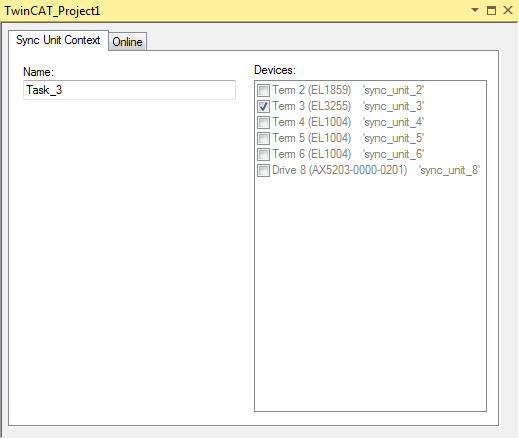
Under "Online" we see terminal 3. The terminals are consecutively numbered in the "No" column. There is only one terminal in this Sync Unit. It has the fixed address "EtherCAT Addr" with the number 1002. Its name is "Term 3". The operating state is "OP".
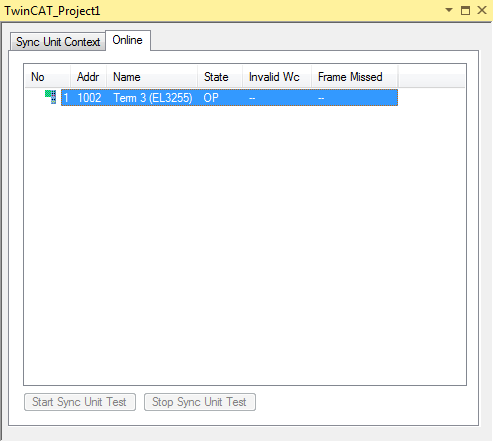
The lower screen shows the Sync Units that were created: sync_unit_2, sync_unit_3, sync_unit_4, sync_unit_5, sync_unit_6 and sync_unit_8. Task_2 is assigned to sync_unit_2, Task_3 is assigned to sync_unit_3, Task_4 is assigned to sync_unit_4, Task_5 is assigned to sync_unit_5.
